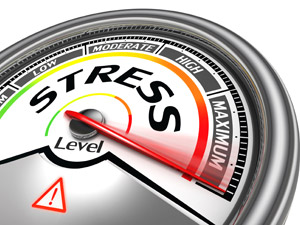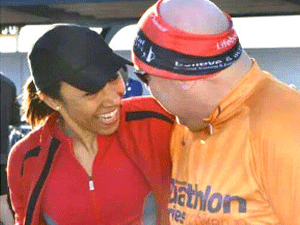
ONE of the trickiest questions I’m asked is this: “When somebody loses weight, where does all the fat go?” You know what – I wasn’t too sure myself the first time this cropped up. Luckily, I spend a lot of time studying research papers from around the world so thanks to an article in the British Medical Journal I was able to give a definitive answer. And you might be very surprised when you discover what that answer is.
Almost all the fat we lose is breathed out through our lungs as carbon dioxide. The rest is lost through sweat and urine.
I’m indebted to Dr Ruben Meerman and Dr Andrew Brown from the University of New South Wales in Australia for solving this important mystery – even if they did have to come up with this as their answer C55H104O6+78O2→55CO2+52H2O+energy 🙂
Once you understand the link between breathing and losing weight, you see life in a very different light.
How you lose body fat
Here’s the simple science: Every carb you eat, most of the protein and nearly all the fats are converted into carbon dioxide and water. If you don’t get rid of it all, you put on weight.
Now for the maths: The average person consumes almost 8lbs of food and drink a day (3.5kg) and breathes in about 21 ounces (600g) of oxygen.
So if less than 9lbs comes out (that’s 4kg) you’re going to put on weight.

How can you make sure that more comes out than goes in? Sadly, it’s not as simple as eat less and breathe out more. And no pills and potions will help either.
Of course, you’ve got to make sure you eat good, healthy food. That’s a given.
But just as important you need to increase the amount of carbon dioxide you’re breathing out – and the only effective way you can do that is to raise your metabolism by moving your muscles more.
Going for a walk triples your metabolic rate, and (sadly) so will Hoovering and sweeping. Even standing up can double your metabolic rate.
Read the BMJ research findings in full
How you lose body fat
Eating less obviously helps but consider these basic facts: We have to eat to survive and our daily intake has to be burned up. Metabolising 3.5 ounces (3.5oz) of fat intake uses 10 ounces (290g) of oxygen and produces 9.8 ounces (280g) of carbon dioxide plus 3.8 ounces (110g) of water.
Now let’s look at weight loss: To lose 3.5 ounces (100g) of fat a day, you have to exhale 9.8 ounces (280g) of carbon dioxide IN ADDITION to what you’ll breathe out while metabolising your daily food intake.
So you can see you’ve got to double your output of carbon dioxide every day to lose weight. One bit of good news is that we breathe out 7 ounces (200g) of carbon dioxide while we’re asleep at night, so that’s a quarter of your daily target gone before you get up.
But during the day, you’ve got to make sure you make healthier food choices (which is what a Slimpod is designed to do) and then be more active to lose weight. It’s why I swim, work out, play tennis or walk my dogs every morning and it’s why I’m a size 10 after having three children.
I’m luckier than most, I suppose – I’m my own boss so I can decide when I want to exercise and when I want to sit at my desk. But everyone can decide to stand up and walk around the office for a few minutes every hour.
Everyone can decide to take a walk in their lunch break. Everyone can decide to walk up stairs and not take the lift. And everyone can decide to get moving more before or after work and at weekends.
What can YOU do to move more every day? Let me know by leaving a comment below. I look forward to reading them all – and I know they will inspire others.





15 thoughts on “How you lose body fat – the answer is C55H104O6+78O2→55CO2+52H2O”
I love how simple this all is: Eat better and move more.
Very interesting article always wondered what happened. Thank you.
Wow that was so interesting!
This explains why NEAT works. There does seem to be some conflict with HIIT but I think HIIT helps with other things rather than only weight loss.
This information is power. The more we understand how our eating and moving habits affect us the better armed we are to make good decisions that keep us healthy.
Well I will just have to spend more time in bed! seriously though eating better and moving more helps
Very interesting. I move around more by walking/ running on the spot whilst waiting for the kettle to boil, or dancing to the radio instead of sitting down
Great inspiration to get moving. We’ve heard for so long that diet’s the main ingredient to weight loss with exercise, while necessary, coming in a distant second. According to this research, one can offset the other easier than previously reported. Thanks again for the info.
Knowledge is power, thank you
You’re an amazing life changer, just reading this you have changed my life … how amazing .. may you always be blessed in return for what you do for others ((((THANK YOU))))
At the age of 64 I have taken up running. Having been 10st10lbs at the age of 10 I was always the fat kid. I now love to run and am a member of a running club even though I am the oldest by far everyone is so encouraging. No I will never be fast but I am free. At first I couldn’t run from one lamppost to the next without feeling sick and having to walk now I love to run.
That is so inspiring! Whow! Great. Don’t want to sound patronising, but I think that is wonderful.
This is a difficult one for me exercise does not come easily to me. I could take a few 10 minute walks in a day.
Very interesting article, thanks – Besides regular walks in our hilly city, I try to climb the 126 steps to our apartment on the 7th floor once a day, instead of taking the lift . . . .
It does make sense and I like the science explanation, fascinating.
For me personally, I need to move more at work, particularly on an office day. At home I need to think about how much I’m sitting and move more. I do run at least twice a week, but this is going to increase as training for half marathon In September – this would all help towards my goals.